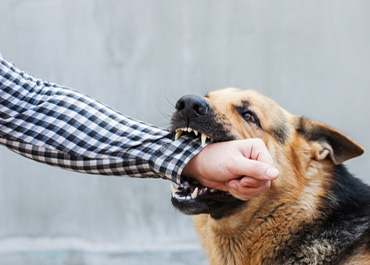
Dog bites can lead to various types of infections due to the bacteria present in the dog’s mouth and on their skin. These infections can range from mild to severe, depending on the circumstances of the bite and the subsequent treatment. Here are the four most common types of infection risks associated with dog bites:
Bacterial Infections
One of the primary risks of a dog bite is bacterial infection. Dogs’ mouths contain numerous bacteria, including Pasteurella, Staphylococcus, and Capnocytophaga species. When a dog bites, these bacteria can be introduced into the victim’s skin and soft tissues. Pasteurella is particularly common and can cause redness, swelling, and pus formation at the bite site within 24 to 72 hours. Staphylococcus infections can lead to cellulitis or abscesses, especially if the wound is not properly cleaned and treated promptly. Capnocytophaga can cause more severe infections, particularly in individuals with weakened immune systems.
Tetanus
Tetanus is caused by the bacterium Clostridium tetani, which is commonly found in soil, dust, and animal feces, including dogs’. While tetanus is more commonly associated with puncture wounds, any deep dog bite can potentially introduce this bacterium into the body. Tetanus bacteria produce toxins that affect the nervous system, leading to muscle stiffness and potentially life-threatening complications if not treated promptly with tetanus immunoglobulin and a tetanus booster vaccine.
Viral Infections
While less common than bacterial infections, viral infections can also result from dog bites. Rabies is the most concerning viral infection transmitted by dogs, although it is relatively rare in countries with effective vaccination programs for pets. Rabies is a fatal viral disease that affects the central nervous system and is transmitted through the saliva of infected animals, usually through a bite. Prompt medical evaluation and administration of post-exposure prophylaxis, including rabies vaccination and immunoglobulin, are essential to prevent rabies infection following a dog bite.
Fungal Infections
Fungal infections are less common but can occur following a dog bite, particularly if the wound is not adequately cleaned and dressed. Candida and other fungal species can colonize moist, warm areas of the skin, leading to fungal skin infections. These infections can cause redness, itching, and discomfort at the bite site. Individuals with compromised immune systems or those taking antibiotics are at higher risk of developing fungal infections following a dog bite.
In addition to the injury itself, dog bites pose significant risks of infection due to the bacteria, viruses, and fungi present in dogs’ mouths and environments. Anyone who has suffered a dog bite injury should speak with a dog bite lawyer to determine what legal recourse they may have.
Thank you to our friends at Bennerotte & Associates, P.A. for their insight into dog bite injury cases.

Call For A Free Consultation
(848) 800-8486